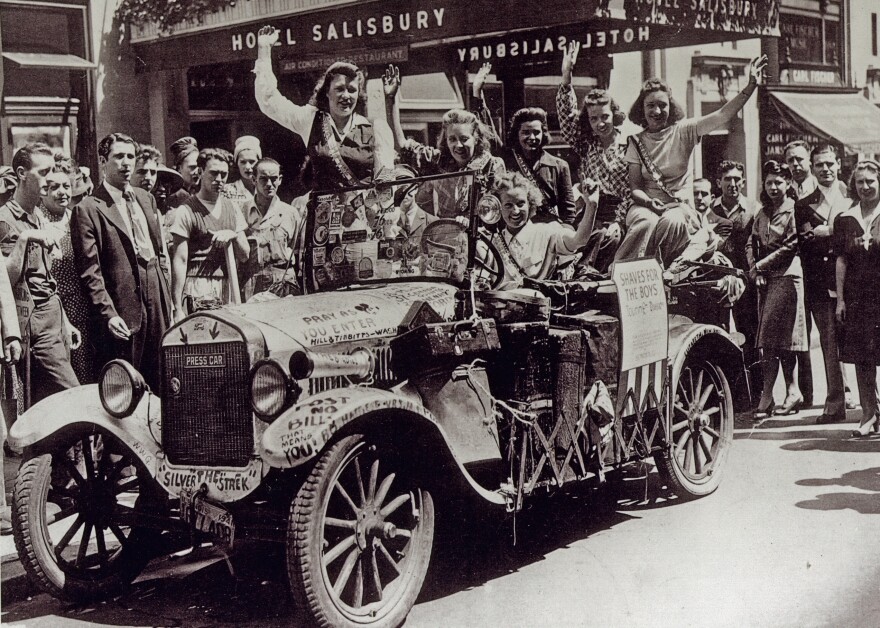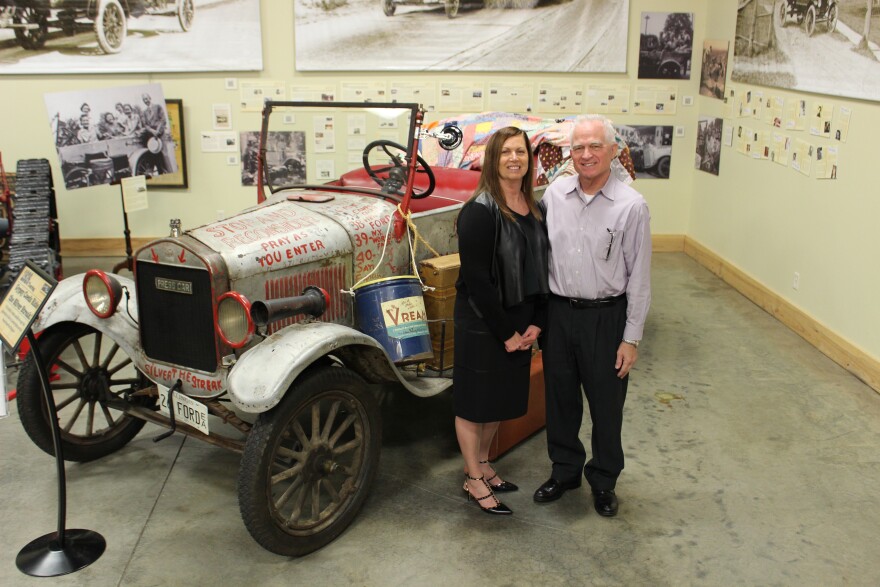Editor's note: This story first ran in April 2016 and has been updated.
For eight summers beginning in 1934, a series of 20 women -- known as the Gypsy Coeds -- toured the U.S. and Canada in a Model T Ford known as the Silver Streak. They were heralded everywhere they went, even meeting Henry Ford.

What a sight they must have been, six young women packed into a car fit for five, driving cross-country with their luggage strapped to the running boards of a 1926 Model T Touring Car.
"The girls called it the Silver Streak," says John Butte. "It's a wonderful story about a sisterhood of girls that took trips in the 1930s and '40s. My mother was one of those girls and my Aunt Eleanor was another one."
John Butte loved listening to tales of their travels. When she died in 2011, he set out to find the Silver Streak. And he did in Portland, Oregon. He brought it back to Bradford, Illinois, where the story begins.

"Darlene, who owned the car, was a beautician - had a beauty parlor in the basement of her parent's home - and she began organizing summer vacations very shortly after she got her first car."
Between 1934 and 1942, Darlene Dorgan and her friends spent the summers driving across North America to Wisconsin, Canada, New York, and one epic six-week trip to California. A girls trip today? Sure. But in the mid '30s and '40s? They were a rarity.

Butte has written a book about the the women, the car and their adventures.
They went to two World's Fairs, met movie stars and dignitaries, forged a special bond with Henry Ford, and slept in a few odd places along the way.
Butte's mother, Regina, recounted in a 1998 interview how the women had some help from the police in a small town just north of the U.S. border in Canada.
"They took us down to the jail," she laughs. "At the jail, they said 'we don't have anyone in the jail tonight so you just bring your blankets and pillows and come on in. There's cots in here and you can sleep on the cots for the night.' So that's just what we did."
The women did a lot of camping and loved jitterbugging in dance halls. Darlene had three rules: No drinking, no smoking, and everyone goes home together at the end of the night.
If the car broke down or got a flat, the women fixed it themselves. When it needed a new top, Darlene sewed a new one out of awning remnants. The patchwork top reminded the women of a gypsy wagon and they dubbed themselves The Gypsy Coeds.

They made friends easily and found kindness in unexpected places. Like the truck driver hauling a car carrier who gave them a lift up a mountain when it was obvious the car wasn't going to make it.
"We drove our Model T up on the carrier," says Regina Fennell Butte, "and he took off down the road and people going by looked over and see these girls sitting in this Model T on this carrier that's supposed to be carrying new cars... and they'd be looking at us and they'd pull over and run off the road and back on the road. It's a wonder they didn't have an accident, but they didn't. And they'd be laughing."
Two of the Gypsy Coeds are still alive. Though they've stopped giving interviews, each Labor Day the pair sit up high in the back seat of the Silver Streak and wave to parade crowds as John Butte and his wife, Carmen, drive through the streets of Bradford.
That's right, the car still runs.
"Yes, I bought it on the condition that it still ran," says Butte.

Model T's famously only came in black. Butte says folklore has it Darlene Dorgan didn't want a black car, so she painted it silver. The outside's still adorned with cheery red slogans known as "Lizzie labels," penciled autographs, and a list of all the summer escapades.

"... '35, Wisconsin; '36, Michigan; '37, Canada to see the Dionne quintuplets; '38 they met Henry Ford; '39, the New York World's Fair; '40, San Francisco Golden Gate Exposition." And then, Butte says, "'41 was a question mark. It was put on in 1940 and they were planning to go on a '41 trip, and they did go on '41, and '42 was the last trip."
Why was 1942 the final trip?
"'42 was the end, principally I think, because the war had started."

The trips ended but the legacy lived on for a time in an exhibit at the Model T Museum in Richmond, Indiana where Susan Yaeger is Executive Director.
"It just really captures what the Model T is about and why people love to collect them," she said at the time. "It's always family stories that are involved. We're very, very privileged to be able get such a special car and have it here on loan for the next several months."



